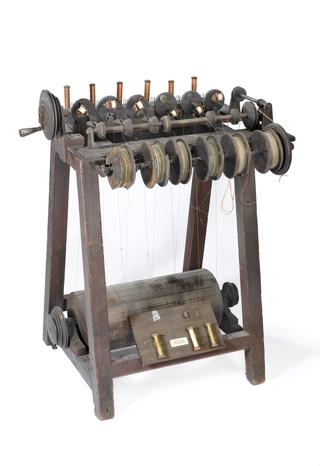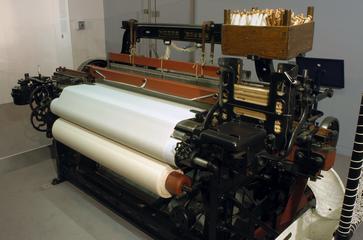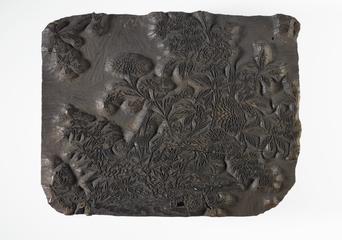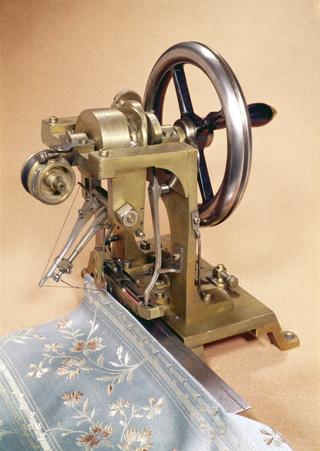

Cord-covering machine
- Made:
- 1855-1860
Machine for making covered or plaited twist, patentee W. H. Zahn.
This machine, patented by Mr. W. H. Zahn in 1855, is for wrapping the strands of a cotton cord with silk, and then laying the strands together into a finished ornamental cord of possibly four differently coloured strands. The machine is arranged vertically, with four bobbin frames projecting from a face plate, beneath which is a lantern i-ing that gears with a spur wheel attached to each of the frames. Each frame carries two bobbins, a large vertical one holding the core material, and a small horizontal one supplying the covering silk, which is in the form of sliver. Above the bobbin frames is a disc, that steadies them and also carries guide sheaves leading to the lay-top; above all is a return sheave, round which the finished cord passes down to the winding-off rollers, which deliver it to a large reeling bobbin.
If the cord is merely to be covered without stranding it together, the lantern ring is alone driven, so rotating the bobbin frames and winding the silk round the core, as delivered, the twisting so introduced not being objectionable. If the four cords so covered are required to be stranded together, the lantern ring is held stationary and the upper disc driven, so that in addition to the covering action the four cords are closed together into a rope
Details
- Category:
- Textiles Machinery
- Object Number:
- 1860-11
- Measurements:
-
overall: 1.14 x .8 x .9 m
- type:
- braiding machine
- credit:
- J. Lewis.




